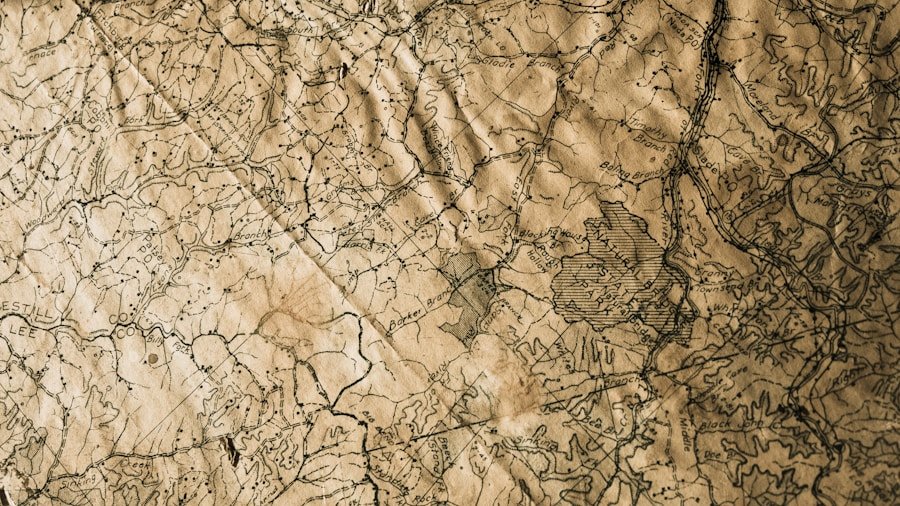Network mapping is a potent tool employed to visualize and analyze complex systems by creating visual representations of connections between various nodes within a network. These nodes can symbolize diverse entities, including individuals, organizations, computers, and other devices. By mapping out these connections, it becomes possible to comprehend the structure and dynamics of the network, as well as identify potential vulnerabilities or opportunities for enhancement.
Network mapping has diverse applications across various fields, including computer science, social science, and business. In computer science, it is frequently utilized to visualize connections between devices on a network, such as routers, switches, and servers. In social science, network mapping is employed to examine relationships between individuals or organizations, whereas in business, it is used to analyze connections between different departments or branches of a company.
Key Takeaways
- Network mapping is a valuable tool for visualizing complex systems and understanding the relationships between different elements.
- Nodes play a crucial role in network mapping as they represent the individual elements within a system, such as people, computers, or organizations.
- There are various tools available for network mapping, each with its own strengths and weaknesses, so it’s important to choose the best tool for the specific project or analysis.
- Network mapping can be used to analyze and visualize data, helping to identify patterns, trends, and connections within a system.
- Effective network mapping and analysis require careful planning, clear objectives, and attention to detail, as well as an understanding of the specific context and goals of the project.
The Importance of Nodes in Network Mapping
Here is the rewritten text with 3-4 Nodes in Network Mapping ===================== ### Understanding Nodes in Network Mapping Nodes are a fundamental component of network mapping, as they represent the individual entities within a network. These entities can be anything from people and organizations to computers and other devices. By understanding the role of nodes in network mapping, it becomes easier to create accurate and meaningful visual representations of the connections within a network. ### Representing Nodes in Network Maps In network mapping, nodes are typically represented by symbols or icons, which are connected by lines or arrows to represent the connections between them. The size, color, and position of these nodes can also be used to convey additional information about their importance or characteristics within the network. ### Analyzing Node Placement and Attributes By carefully considering the placement and attributes of nodes within a network map, it becomes easier to identify patterns and relationships that may not be immediately apparent from a simple list of connections.
Exploring the Best Tools for Network Mapping
There are a wide range of tools available for network mapping, each with its own strengths and weaknesses. Some of the most popular tools for network mapping include Gephi, Cytoscape, and Visio. Gephi is a powerful open-source tool that is particularly well-suited for visualizing large and complex networks, while Cytoscape is a versatile platform that is widely used in the biological and social sciences.
Visio, on the other hand, is a popular choice for business users due to its integration with other Microsoft Office applications. When choosing a tool for network mapping, it is important to consider factors such as the size and complexity of the network, as well as the specific requirements of the project. Some tools may be better suited for visualizing large-scale networks with thousands of nodes and connections, while others may be more appropriate for smaller, more focused networks.
It is also important to consider the ease of use and flexibility of the tool, as well as its compatibility with other software and data formats.
How to Use Network Mapping to Visualize Complex Systems
Network mapping can be used to visualize complex systems in a wide range of fields, including computer science, social science, and business. In computer science, network mapping is often used to visualize the connections between different devices on a network, such as routers, switches, and servers. This can help to identify potential bottlenecks or vulnerabilities within the network, as well as optimize the flow of data and resources.
In social science, network mapping can be used to study the relationships between individuals or organizations. This can help to identify key influencers or connectors within a social network, as well as understand the flow of information and resources between different groups. In business, network mapping can be used to analyze the connections between different departments or branches of a company.
This can help to identify opportunities for collaboration or consolidation, as well as optimize the flow of resources and information within the organization.
The Role of Networks in Data Analysis and Visualization
Networks play a crucial role in data analysis and visualization, as they provide a powerful framework for understanding complex relationships and patterns within a dataset. By visualizing data as a network, it becomes easier to identify clusters, hubs, and other important structures within the data. This can help to uncover hidden patterns or relationships that may not be immediately apparent from traditional data visualization techniques.
In addition to visualizing data as a network, networks can also be used to analyze and model complex systems. For example, social networks can be used to model the spread of information or disease within a population, while computer networks can be used to model the flow of data or resources within an organization. By using networks as a framework for data analysis and visualization, it becomes easier to understand the underlying structure and dynamics of complex systems.
Tips for Effective Network Mapping and Analysis
Accurate Node Representation
Carefully considering the attributes and connections of each node within the network is crucial. This helps create more accurate and meaningful visual representations of the connections within the network.
Choosing the Right Tool
The size and complexity of the network should be taken into account when selecting a tool for network mapping. Different tools are better suited for visualizing large-scale networks with thousands of nodes and connections, while others are more appropriate for smaller, more focused networks.
Tool Selection Based on Project Requirements
The specific requirements of the project should also be considered when choosing a tool for network mapping. Some tools are better suited for specific fields or applications, such as computer science or social science, while others are more versatile and widely applicable.
Case Studies: Real-world Applications of Network Mapping
There are many real-world applications of network mapping across various fields. In computer science, network mapping is often used to visualize the connections between different devices on a network, such as routers, switches, and servers. This can help to identify potential bottlenecks or vulnerabilities within the network, as well as optimize the flow of data and resources.
In social science, network mapping can be used to study the relationships between individuals or organizations. This can help to identify key influencers or connectors within a social network, as well as understand the flow of information and resources between different groups. In business, network mapping can be used to analyze the connections between different departments or branches of a company.
This can help to identify opportunities for collaboration or consolidation, as well as optimize the flow of resources and information within the organization. Overall, network mapping is a powerful tool that can be used to visualize and analyze complex systems in a wide range of fields. By carefully considering the attributes and connections of each node within a network, it becomes easier to create accurate and meaningful visual representations of the connections within the network.
Additionally, by choosing the right tool for network mapping and analysis, it becomes easier to uncover hidden patterns or relationships that may not be immediately apparent from traditional data visualization techniques.
FAQs
What is network mapping?
Network mapping is the process of creating visual representations of a network’s structure, connections, and interactions. It helps to understand the relationships between different elements within a network, such as computers, servers, and other devices.
Why is network mapping important?
Network mapping is important for understanding the layout and connections within a network, identifying potential vulnerabilities, optimizing network performance, and planning for future growth and changes.
What are the best tools for network mapping?
There are several tools available for network mapping, including open-source options like Nmap, commercial software like SolarWinds Network Topology Mapper, and cloud-based solutions like Lucidchart. The best tool for network mapping depends on the specific needs and requirements of the user or organization.
What features should I look for in a network mapping tool?
When choosing a network mapping tool, it’s important to consider features such as automatic discovery of devices, support for different types of networks (wired, wireless, virtual), visualization capabilities, integration with other network management tools, and security features.
How can network mapping tools help with network security?
Network mapping tools can help identify potential security vulnerabilities within a network, such as unauthorized devices or open ports, allowing for proactive measures to be taken to secure the network. They can also assist in monitoring network traffic and detecting unusual or suspicious activity.











